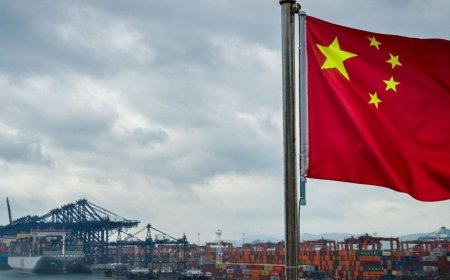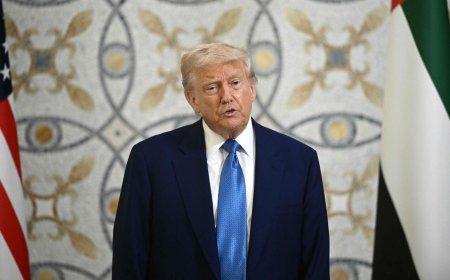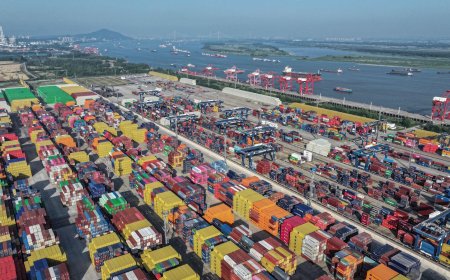Trump Reveals Latest Batch of Tariffs From Iraq to Philippines
Donald Trump unveils latest tariff proposals targeting countries like Iraq, Philippines, and Vietnam. Analysts weigh impact on trade, markets, and U.S. election politics.

Washington D.C., July 10, 2025 — Former President Donald Trump, who is actively campaigning for a potential second term in the White House, has unveiled a sweeping new batch of proposed tariffs targeting a diverse range of countries including Iraq, the Philippines, Vietnam, and others. The announcement marks a continuation of Trump’s aggressive trade strategy, aimed at what he describes as “rebalancing America’s trade relationships” and protecting U.S. industry from unfair foreign practices.
The proposed measures have sparked reactions across global markets and political circles, raising concerns about renewed trade tensions and the potential impact on emerging economies and U.S. businesses alike.
A New Phase of Tariff Expansion
In a press briefing held in Des Moines, Iowa, Trump announced that if re-elected, he plans to impose tariffs ranging from 10% to 60% on various goods imported from countries he accuses of “taking advantage of America's generosity.”
Among the countries named were Iraq, Philippines, Vietnam, Thailand, and Indonesia, all of which have enjoyed preferential trade relationships or lower tariffs under previous administrations. The new tariffs will reportedly focus on electronics, textiles, automotive parts, and agricultural products, sectors where Trump believes U.S. manufacturers have been undercut.
“We’re bringing the jobs back. We are not going to let these countries flood our markets with cheap goods while they protect their own,” Trump said. “Our workers deserve a level playing field.”
The announcement comes amid rising global uncertainty about the future direction of U.S. trade policy, especially as election rhetoric intensifies.
Market Reaction and Trade Experts Weigh In
Global markets responded cautiously. The Dow Jones Industrial Average fell 130 points in early trading, while Asian stocks saw moderate declines, especially in markets with high export exposure to the U.S., such as Vietnam and the Philippines.
“While the tariffs are still hypothetical at this stage, the threat alone is enough to spook supply chains,” said Dr. Angela Morris, Senior Trade Analyst at the Brookings Institution. “Companies will need to factor in policy risk again—something we hadn’t seen to this degree since 2018–2020.”
“It’s classic Trump—rhetoric that resonates domestically but can cause tremors globally,” added Vikas Talreja, chief economist at GlobalEdge Advisors. “The inclusion of Iraq is particularly surprising, given its limited trade volume with the U.S., suggesting that the move may be as much about geopolitics as economics.”
Impact on Key Sectors and Trade Relations
The announcement has triggered concern among import-dependent industries in the U.S., such as retail, automotive, and consumer electronics.
Companies like Walmart, Apple, and Ford—all of which source components or finished products from Southeast Asia—are expected to review their supply chain strategies if these tariffs are implemented.
Meanwhile, in countries like the Philippines and Vietnam, officials have expressed disappointment and sought clarification.
A statement from the Philippine Department of Trade and Industry said, “We view our relationship with the U.S. as one based on mutual respect and benefit. Any new tariffs would hurt not just our exporters but American consumers as well.”
Domestic Political Motives and Election Calculations
Trump’s tariff proposals are widely seen as a move to rally his base with a populist, protectionist message. The new batch of countries named suggests a shift from confronting major economies like China and the EU to targeting smaller nations that have growing trade surpluses with the U.S.
“This is more about signaling than substance,” said Elaine Zhu, a political analyst at Eurasia Group. “He’s aiming to revive the ‘America First’ narrative but without reigniting a full-scale trade war with China or Mexico.”
Analysts also note that this strategy may resonate with working-class voters in manufacturing-heavy states like Pennsylvania, Ohio, and Michigan—key battlegrounds in the 2024 election.
Investor Outlook: Navigating the Trade Shock
For investors, the announcement underscores the need to closely monitor political developments as part of risk management. While markets have not yet priced in a full-blown tariff regime, sectors such as manufacturing, logistics, and consumer goods could face turbulence.
“We advise a cautious approach in the short term,” said Meera Patel, portfolio manager at RisingSun Capital. “Diversification across geographies and exposure to domestic-oriented U.S. firms might help hedge against trade policy shocks.”
Some investors are already seeking safe havens. Gold prices rose 0.5% on the day of the announcement, while the dollar weakened slightly against the yen.
Looking Ahead
While Trump’s proposals are not yet formal policy, the statement signals a possible return to protectionism should he win in 2024. With global trade recovering post-pandemic and inflationary pressures still lingering, a new wave of tariffs could have broad consequences—not just economically, but diplomatically.
As the election season unfolds, businesses, investors, and foreign governments will be watching closely to see whether Trump’s proposals gain traction—or are tempered by political and market realities.
What's Your Reaction?
 Like
0
Like
0
 Dislike
0
Dislike
0
 Love
0
Love
0
 Funny
0
Funny
0
 Angry
0
Angry
0
 Sad
0
Sad
0
 Wow
0
Wow
0













































































